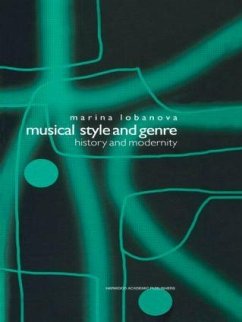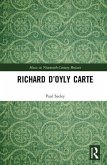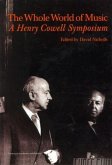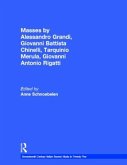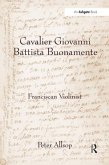- Gebundenes Buch
- Merkliste
- Auf die Merkliste
- Bewerten Bewerten
- Teilen
- Produkt teilen
- Produkterinnerung
- Produkterinnerung
First Published in 2000. Routledge is an imprint of Taylor & Francis, an informa company.
Andere Kunden interessierten sich auch für
![Richard d'Oyly Carte Richard d'Oyly Carte]() Paul SeeleyRichard d'Oyly Carte197,99 €
Paul SeeleyRichard d'Oyly Carte197,99 €![The English Musical Renaissance and the Press 1850-1914: Watchmen of Music The English Musical Renaissance and the Press 1850-1914: Watchmen of Music]() Meirion HughesThe English Musical Renaissance and the Press 1850-1914: Watchmen of Music198,99 €
Meirion HughesThe English Musical Renaissance and the Press 1850-1914: Watchmen of Music198,99 €![Whole World of Music Whole World of Music]() David Nicholls (ed.)Whole World of Music197,99 €
David Nicholls (ed.)Whole World of Music197,99 €![Masses by Alessandro Grandi, Giovanni Battista Chinelli, Tarquinio Merula, Giovanni Antonio Rigatti Masses by Alessandro Grandi, Giovanni Battista Chinelli, Tarquinio Merula, Giovanni Antonio Rigatti]() Anne Schnoebelen (ed.)Masses by Alessandro Grandi, Giovanni Battista Chinelli, Tarquinio Merula, Giovanni Antonio Rigatti137,99 €
Anne Schnoebelen (ed.)Masses by Alessandro Grandi, Giovanni Battista Chinelli, Tarquinio Merula, Giovanni Antonio Rigatti137,99 €![Lost in the Grooves Lost in the Grooves]() Lost in the Grooves198,99 €
Lost in the Grooves198,99 €![Cavalier Giovanni Battista Buonamente Cavalier Giovanni Battista Buonamente]() Peter AllsopCavalier Giovanni Battista Buonamente196,99 €
Peter AllsopCavalier Giovanni Battista Buonamente196,99 €![Sound and Music for the Theatre Sound and Music for the Theatre]() Deena KayeSound and Music for the Theatre198,99 €
Deena KayeSound and Music for the Theatre198,99 €-
-
-
First Published in 2000. Routledge is an imprint of Taylor & Francis, an informa company.
Hinweis: Dieser Artikel kann nur an eine deutsche Lieferadresse ausgeliefert werden.
Hinweis: Dieser Artikel kann nur an eine deutsche Lieferadresse ausgeliefert werden.
Produktdetails
- Produktdetails
- Verlag: Taylor & Francis
- Seitenzahl: 218
- Erscheinungstermin: 6. Juli 2000
- Englisch
- Abmessung: 229mm x 152mm x 14mm
- Gewicht: 463g
- ISBN-13: 9789057550676
- ISBN-10: 9057550679
- Artikelnr.: 54609260
- Herstellerkennzeichnung
- Libri GmbH
- Europaallee 1
- 36244 Bad Hersfeld
- gpsr@libri.de
- Verlag: Taylor & Francis
- Seitenzahl: 218
- Erscheinungstermin: 6. Juli 2000
- Englisch
- Abmessung: 229mm x 152mm x 14mm
- Gewicht: 463g
- ISBN-13: 9789057550676
- ISBN-10: 9057550679
- Artikelnr.: 54609260
- Herstellerkennzeichnung
- Libri GmbH
- Europaallee 1
- 36244 Bad Hersfeld
- gpsr@libri.de
Marina Lobanova
Introduction; History and the present day; The problem of cultural dialogue; Section 01 1. Unprecedented Reality: Innovation, Tradition and Style in Epochs of Great Rupture; Section 01
01
01 "Something has come to an end"; Section 01
01
02 The antinomies of Baroque; Section 01
01
03 Innovation
tradition
culture; Section 01
01
04 Baroque "conservatives" and "modernists"; Section 01
01
05 Innovation in twentieth
century culture; Section 01
01
06 Tradition: the preservation and transformation of culture; Section 01
01
07 Culture and memory; Section 02 2. The Principles of Musical Poetics
Baroque and the Twentieth Century; Section 02
01
01 The concept of music; Section 02
01
02 "Music" in the age of Baroque; Section 02
01
03 "Music" in the twentieth century; Section 02
01
04 The "musica politica" of the twentieth century; Section 02
01
05 "Seeing" or "hearing"?; Section 02
01
06 Space
time
motion; Section 02
01
07 Concepts of space, time and motion in the age of Baroque; Section 02
01
08 The development of a new concept of space, time and motion: 1920s to 1930s; Section 02
01
09 Concepts of musical time in the twentieth century; Section 02
01
10 Space
time compositions in music; Section 03 3. The Formation of a New Concept of Musical Style; Section 03
01
01 The language of art in epochs of great rupture; Section 03
01
02 Music and words: new treatments; Section 03
01
03 Problems of musical syntax: Baroque
Classicism
Romanticism; Section 03
01
04 The "new musical syntax" of the twentieth century: principles and distinguishing features; Section 04 4. Problems of Musical Style: Classicism, Baroque and the Twentieth Century; Section 04
01
01 The concept of style in the age of Baroque; Section 04
01
02 New functions of musical style in the twentieth century; Section 04
01
03 The problem of style in the early decades of the twentieth century; Section 04
01
04 The "polystylistic situation" in the second half of the 1960s; Section 04
01
05 From the "polystylistic situation" to a "mixed style"; Section 05 5. The Problem of Musical Genre: Baroque, Classicism and the Twentieth Century; Section 05
01
01 "In mixto genere"; Section 05
01
02 The crisis of "absolute music" and the formation of the twentieth
century genre system; Section 05
01
03 The genre experiment; Section 05
01
04 The plurality principle; Section 05
01
05 The mixing principle; Section 05
01
06 Memory in musical genre; conclusion In Lieu of a Conclusion; New syntheses; Appendices; Tables; Diagrams; Index;
01
01 "Something has come to an end"; Section 01
01
02 The antinomies of Baroque; Section 01
01
03 Innovation
tradition
culture; Section 01
01
04 Baroque "conservatives" and "modernists"; Section 01
01
05 Innovation in twentieth
century culture; Section 01
01
06 Tradition: the preservation and transformation of culture; Section 01
01
07 Culture and memory; Section 02 2. The Principles of Musical Poetics
Baroque and the Twentieth Century; Section 02
01
01 The concept of music; Section 02
01
02 "Music" in the age of Baroque; Section 02
01
03 "Music" in the twentieth century; Section 02
01
04 The "musica politica" of the twentieth century; Section 02
01
05 "Seeing" or "hearing"?; Section 02
01
06 Space
time
motion; Section 02
01
07 Concepts of space, time and motion in the age of Baroque; Section 02
01
08 The development of a new concept of space, time and motion: 1920s to 1930s; Section 02
01
09 Concepts of musical time in the twentieth century; Section 02
01
10 Space
time compositions in music; Section 03 3. The Formation of a New Concept of Musical Style; Section 03
01
01 The language of art in epochs of great rupture; Section 03
01
02 Music and words: new treatments; Section 03
01
03 Problems of musical syntax: Baroque
Classicism
Romanticism; Section 03
01
04 The "new musical syntax" of the twentieth century: principles and distinguishing features; Section 04 4. Problems of Musical Style: Classicism, Baroque and the Twentieth Century; Section 04
01
01 The concept of style in the age of Baroque; Section 04
01
02 New functions of musical style in the twentieth century; Section 04
01
03 The problem of style in the early decades of the twentieth century; Section 04
01
04 The "polystylistic situation" in the second half of the 1960s; Section 04
01
05 From the "polystylistic situation" to a "mixed style"; Section 05 5. The Problem of Musical Genre: Baroque, Classicism and the Twentieth Century; Section 05
01
01 "In mixto genere"; Section 05
01
02 The crisis of "absolute music" and the formation of the twentieth
century genre system; Section 05
01
03 The genre experiment; Section 05
01
04 The plurality principle; Section 05
01
05 The mixing principle; Section 05
01
06 Memory in musical genre; conclusion In Lieu of a Conclusion; New syntheses; Appendices; Tables; Diagrams; Index;
Introduction; History and the present day; The problem of cultural dialogue; Section 01 1. Unprecedented Reality: Innovation, Tradition and Style in Epochs of Great Rupture; Section 01
01
01 "Something has come to an end"; Section 01
01
02 The antinomies of Baroque; Section 01
01
03 Innovation
tradition
culture; Section 01
01
04 Baroque "conservatives" and "modernists"; Section 01
01
05 Innovation in twentieth
century culture; Section 01
01
06 Tradition: the preservation and transformation of culture; Section 01
01
07 Culture and memory; Section 02 2. The Principles of Musical Poetics
Baroque and the Twentieth Century; Section 02
01
01 The concept of music; Section 02
01
02 "Music" in the age of Baroque; Section 02
01
03 "Music" in the twentieth century; Section 02
01
04 The "musica politica" of the twentieth century; Section 02
01
05 "Seeing" or "hearing"?; Section 02
01
06 Space
time
motion; Section 02
01
07 Concepts of space, time and motion in the age of Baroque; Section 02
01
08 The development of a new concept of space, time and motion: 1920s to 1930s; Section 02
01
09 Concepts of musical time in the twentieth century; Section 02
01
10 Space
time compositions in music; Section 03 3. The Formation of a New Concept of Musical Style; Section 03
01
01 The language of art in epochs of great rupture; Section 03
01
02 Music and words: new treatments; Section 03
01
03 Problems of musical syntax: Baroque
Classicism
Romanticism; Section 03
01
04 The "new musical syntax" of the twentieth century: principles and distinguishing features; Section 04 4. Problems of Musical Style: Classicism, Baroque and the Twentieth Century; Section 04
01
01 The concept of style in the age of Baroque; Section 04
01
02 New functions of musical style in the twentieth century; Section 04
01
03 The problem of style in the early decades of the twentieth century; Section 04
01
04 The "polystylistic situation" in the second half of the 1960s; Section 04
01
05 From the "polystylistic situation" to a "mixed style"; Section 05 5. The Problem of Musical Genre: Baroque, Classicism and the Twentieth Century; Section 05
01
01 "In mixto genere"; Section 05
01
02 The crisis of "absolute music" and the formation of the twentieth
century genre system; Section 05
01
03 The genre experiment; Section 05
01
04 The plurality principle; Section 05
01
05 The mixing principle; Section 05
01
06 Memory in musical genre; conclusion In Lieu of a Conclusion; New syntheses; Appendices; Tables; Diagrams; Index;
01
01 "Something has come to an end"; Section 01
01
02 The antinomies of Baroque; Section 01
01
03 Innovation
tradition
culture; Section 01
01
04 Baroque "conservatives" and "modernists"; Section 01
01
05 Innovation in twentieth
century culture; Section 01
01
06 Tradition: the preservation and transformation of culture; Section 01
01
07 Culture and memory; Section 02 2. The Principles of Musical Poetics
Baroque and the Twentieth Century; Section 02
01
01 The concept of music; Section 02
01
02 "Music" in the age of Baroque; Section 02
01
03 "Music" in the twentieth century; Section 02
01
04 The "musica politica" of the twentieth century; Section 02
01
05 "Seeing" or "hearing"?; Section 02
01
06 Space
time
motion; Section 02
01
07 Concepts of space, time and motion in the age of Baroque; Section 02
01
08 The development of a new concept of space, time and motion: 1920s to 1930s; Section 02
01
09 Concepts of musical time in the twentieth century; Section 02
01
10 Space
time compositions in music; Section 03 3. The Formation of a New Concept of Musical Style; Section 03
01
01 The language of art in epochs of great rupture; Section 03
01
02 Music and words: new treatments; Section 03
01
03 Problems of musical syntax: Baroque
Classicism
Romanticism; Section 03
01
04 The "new musical syntax" of the twentieth century: principles and distinguishing features; Section 04 4. Problems of Musical Style: Classicism, Baroque and the Twentieth Century; Section 04
01
01 The concept of style in the age of Baroque; Section 04
01
02 New functions of musical style in the twentieth century; Section 04
01
03 The problem of style in the early decades of the twentieth century; Section 04
01
04 The "polystylistic situation" in the second half of the 1960s; Section 04
01
05 From the "polystylistic situation" to a "mixed style"; Section 05 5. The Problem of Musical Genre: Baroque, Classicism and the Twentieth Century; Section 05
01
01 "In mixto genere"; Section 05
01
02 The crisis of "absolute music" and the formation of the twentieth
century genre system; Section 05
01
03 The genre experiment; Section 05
01
04 The plurality principle; Section 05
01
05 The mixing principle; Section 05
01
06 Memory in musical genre; conclusion In Lieu of a Conclusion; New syntheses; Appendices; Tables; Diagrams; Index;

